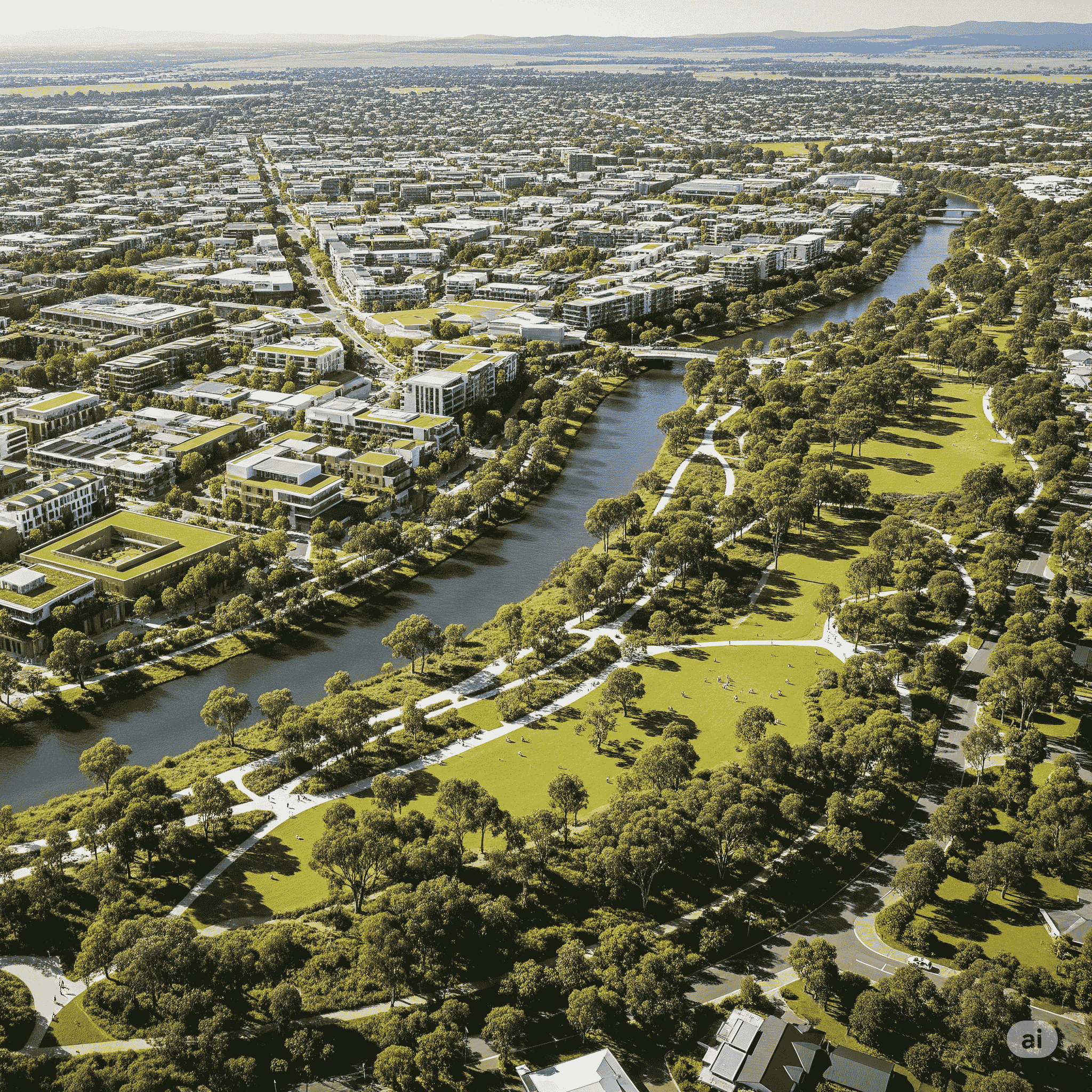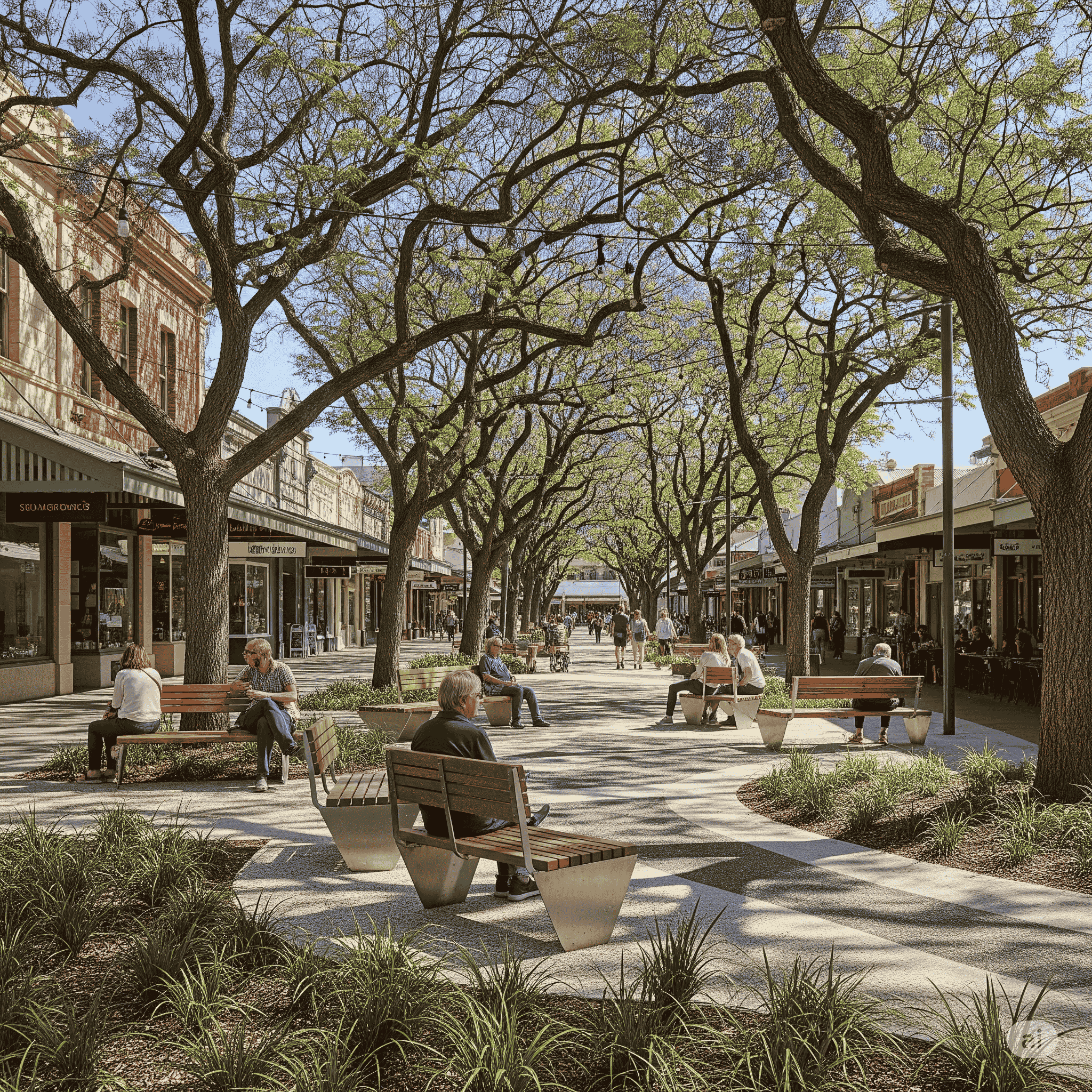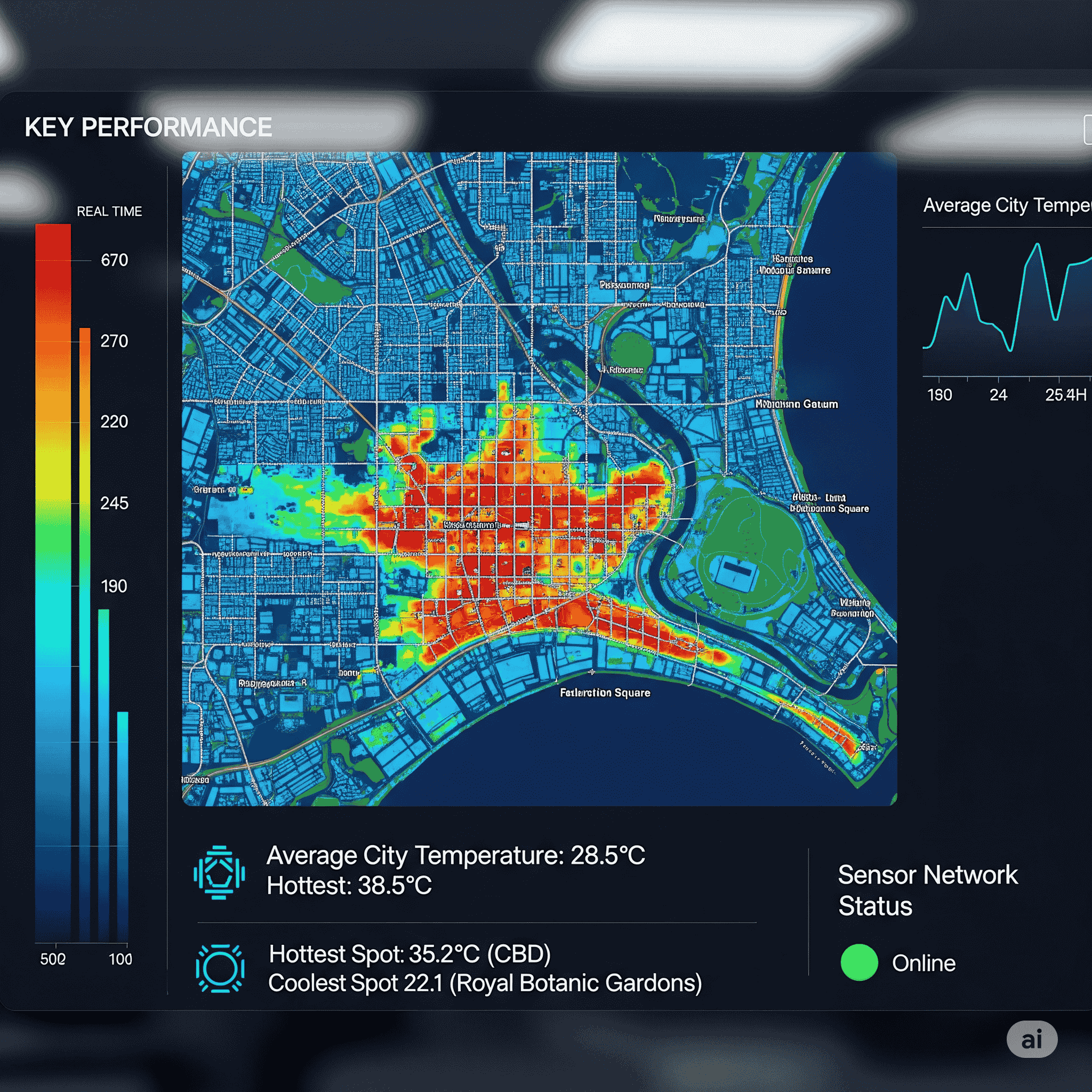
Urban Design Services That Meet Australian Green Building Standards
Discover how urban design services help meet Australian green building standards. Learn how Smart Planning and Design supports sustainable, compliant projects.
read more

Australia's cities are renowned for their vibrant culture and outdoor lifestyles, but they face an invisible and increasingly dangerous threat: the urban heat island effect. This phenomenon occurs when urban areas, with their dark surfaces like asphalt and rooftops, absorb and retain significantly more heat than surrounding natural landscapes. The result is cities that are measurably hotter, leading to a host of problems including increased energy consumption, poor air quality, and serious public health risks, particularly during extreme heat events.
In places like Western Sydney, temperatures can be 6-10°C hotter than coastal areas during a heatwave, making a tangible difference to residents' lives. As climate change leads to more frequent and intense heatwaves, designing for cooler, more comfortable cities is no longer a luxury—it's a fundamental necessity for Smart Planning Australia. This requires moving beyond a reliance on mechanical cooling and embracing a holistic approach to shaping the urban microclimate.
Urban microclimate design is the innovative practice of manipulating a city’s physical environment to manage temperature, humidity, and airflow on a local, street-by-street level. It is a proactive strategy to enhance comfort and livability, building a resilient foundation for the cities of the future. For more on this, we explored the concept in a previous article on urban microclimate design.
Mitigating the urban heat island effect begins at the master planning stage. Smart Planning Australia is about making strategic, city-wide decisions that create a cooler urban landscape.
Zoning and Land Use: Planners can influence a city’s thermal performance by prioritising a mix of land uses. Strategic zoning can increase the ratio of green and blue spaces (parks, rivers, lakes) to built-up areas. For instance, creating "cool corridors" along waterways and through parklands can facilitate the flow of cool air into denser urban areas, offering a natural and effective cooling system.
Urban Form and Orientation: The way a city is laid out can have a huge impact on its microclimate. By orienting streets and buildings to maximise shade and catch prevailing breezes, planners can enhance natural ventilation and reduce direct solar exposure. Mandating minimum tree canopy cover in new developments is another powerful planning tool, ensuring that greenery is a non-negotiable part of a city's future growth.
These top-down planning strategies work in concert with design choices to create more resilient public spaces. To learn more about creating spaces that can handle extreme weather, read our article on designing climate-resilient public spaces.

While planning sets the framework, Smart Design & Planning Australia provides the tangible solutions. This involves a suite of design choices that directly influence temperature and comfort at the street and building level.
Green Infrastructure: Green roofs and walls are a fantastic example of a smart design solution. They not only provide insulation, reducing the need for air conditioning, but also cool the air through a process called evapotranspiration. Trees and vegetation are a city’s best allies against heat, offering shade and natural cooling. The strategic placement of trees can cool a street by several degrees, making it more comfortable for pedestrians and reducing the heat absorbed by buildings. The broader role of green infrastructure is crucial for sustainable planning, which we've discussed in an article on the role of green infrastructure.
Cool Materials: The choice of building materials is also key. "Cool pavements" and reflective roofing materials absorb less solar radiation, reducing surface temperatures by a significant margin. This simple change can prevent streets from becoming heat traps, which then radiate heat back into the environment long after the sun has set.
Water Features: Water, a scarce resource in many parts of Australia, is a powerful cooling agent. Fountains, misting systems, and even strategically placed, shallow pools in public spaces can provide a refreshing local cooling effect, improving thermal comfort for people and creating a more pleasant environment.

The real-time management of urban heat is a hallmark of a Smart City Australia. Technology is no longer just for convenience; it's a critical tool for resilience and adaptation.
IoT Sensor Networks: Smart cities can deploy networks of Internet of Things (IoT) sensors to continuously monitor temperature, humidity, and air quality across different neighbourhoods. This hyper-local data helps planners understand where the hottest spots are and identify which interventions are most effective.
Data-Driven Interventions: This data can then be used to automate a range of responses. For example, a smart irrigation system for a park could be programmed to water plants and cool the ground automatically when a certain temperature threshold is crossed. Data can also inform the public, with apps providing real-time information on the coolest routes to walk or the nearest air-conditioned public space.
Digital Modelling: Digital twins of cities can simulate the impact of new developments or climate events, allowing planners to test different microclimate design strategies—such as the effect of a new park or a change in building material—before a single brick is laid. These technologies allow for predictive analysis, helping cities to proactively adapt and build resilience. This is crucial for creating cooler cities down under that are ready for the future.

Urban microclimate design represents a proactive and intelligent approach to building cities that are not just ready for the future, but actively shape it. By integrating the principles of Smart Planning Australia, innovative design, and cutting-edge technology, we can create urban environments that are more comfortable, healthier, and ultimately more resilient. This is the path forward for Australia's cities to thrive in a changing climate, ensuring a better quality of life for all residents.
The future of urban development is about creating environments that are not just smart, but also climate-adaptive and human-centric. At Smart Planning & Design, we specialise in helping clients integrate these advanced principles into their projects. Our expertise in Smart Planning Australia and Smart Design & Planning Australia enables us to deliver innovative solutions that make a tangible difference to people's lives and the environment.
Contact us today to discuss how we can help you create a city that is not only smart but also naturally cool and resilient.

Discover how urban design services help meet Australian green building standards. Learn how Smart Planning and Design supports sustainable, compliant projects.
read more

Discover the benefits of mixed-use developments in town planning Australia. Learn how they boost convenience, sustainability, and community connection.
read more

Discover why feasibility studies are essential in town planning Australia. Learn how they save time, reduce risks, and improve approval chances.
read more